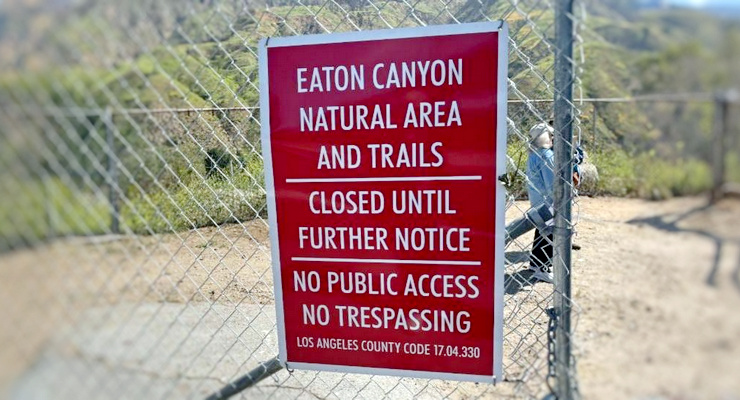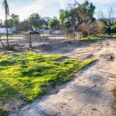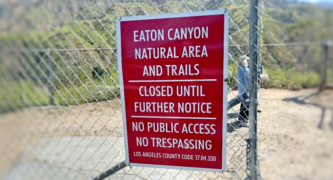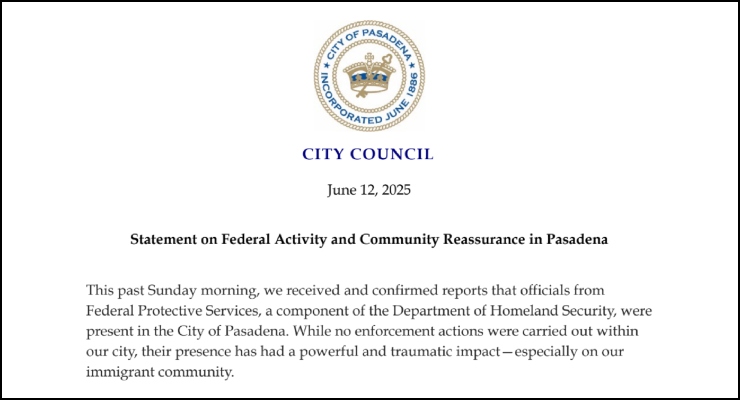
Citing unstable hillsides, destroyed infrastructure, and fragile regrowth following the Eaton Fire, Los Angeles County and U.S. Forest Service officials announced Thursday that Eaton Canyon Natural Area will remain closed indefinitely — at least through the end of this year, and likely longer.
Speaking at the Henninger Trailhead, officials warned the public that returning to the area too soon could lead to their serious injury and the area’s long-term environmental damage.
To prevent unauthorized access and further harm, officials also stressed that trespassing in the closed areas will be met with enforcement. LA County Park Sheriff Bureau officers will issue fines up to $5,000. On Angeles National Forest lands, violations carry even steeper penalties—fines of up to $5,000 for individuals or $10,000 for organizations, plus potential imprisonment for up to six months, according to City News Service.
The closure affects both hiking and equestrian trails throughout the fire-damaged areas. The extended shutdown is necessary to protect the public and allow for the recovery of burned wildlands, according to CNS.
As Norma E. García-González, director of Los Angeles County Parks and Recreation, explained, “In some parts of Eaton Canyon, you don’t even see that a trail existed, and so it is unsafe. We have unstable slopes and loose soils, so at any time if someone is walking, they may find loose soil and can really hurt themselves. We have falling rocks and dead trees.
“As a matter of fact,” she said, “on one of my first visits here, we had a tree that fell five feet in front of us. We don’t want people to hurt themselves and be unsafe. We also need to ensure that nature regenerates itself. That’s really important. We see this glorious green here. We need to make sure that we allow nature to come back on its own.”
Reserve Deputy Sheriff David Chien, team leader of the Altadena Mountain Rescue Team, echoed those safety concerns in a statement to City News Service. “Hikers who trespass onto fire-damaged trails can put themselves at risk from unstable terrain, fallen trees or trails that simply no longer exist,” Chien said. “Respecting closures is the best way to prevent injuries, being rescued and also helps the land to recover.”
García-González also stressed, however, that other trails are available across the county, and users can find them at the L.A. County Parks site at trails.lacounty.gov.
“This damage does present very real threats to public health and safety,” Justin Seastrand, Forest Recreation Manager at the U.S. Forest Service, warned.
“One thing that’s particularly unique about those threats in the Angeles National Forest is the steepness of the slopes. It’s pretty well known and cited that this is one of the steepest mountain ranges anywhere in the country, and with the loose soils that were mentioned, if you do fall, you’re likely to have far more serious consequences with mountains this steep.”
Karen Mateer, vice-president of the Eaton Canyon Nature Center Associates, added that while new green growth is visible in some parts of the canyon, it’s misleading.
“You may be walking along and see little green things sprouting up, but they are not established,” they said. “All it takes is basically one wrong step and it’ll just slough away—and unfortunately, you might be going with it.”
Henninger Flats was described by Seastrand as a “complete loss.” The fire destroyed the old museum building, propagation areas, and restrooms, he said. County agencies had previously been considering incorporating the area into the larger Eaton Canyon park, but those plans were derailed by the fire.
“What the future holds for [Henninger], we don’t know right now,” he said. “But as of right now, it’s going to remain closed just like everything else.”
Millard Campground, a nearby U.S. Forest Service site, will also remain closed for the duration of the recovery. The fire destroyed the campground’s bathroom, and there is currently no funding to replace it.
“The bathroom was destroyed,” Seastrand explained. “Without that bathroom there, we won’t be allowing any use back in there.”
In response to a question about soil stability, another García-González confirmed that an expert team is currently assessing the area for hazards like hydrophobic soil—where the ground repels water due to high heat—making landslides and runoff more likely.
“We have an extensive team of experts that are looking at soil health, soil safety, and that is the work ahead of us,” she said.
Forest Supervisor Roman Torres of the Angeles National Forest encouraged outdoor enthusiasts to explore other areas while Eaton Canyon remains off-limits, according to City News Service. “We encourage visitors to take this opportunity to explore other areas of the forest this Memorial Day holiday and until the Eaton Canyon area reopens,” Torres said.
Volunteers will be invited to assist in future restoration efforts, but those opportunities will be limited and carefully managed.
“We’re not going to have hundreds of thousands of volunteers,” García-González said. “Many of our volunteers have been trained docents, and their safety is just as important.”
The Eaton Fire, which started January 7, destroyed neighborhoods and scorched more than 14,000 acres. At least 18 people died in the fire.
Officials concluded by urging the public to stay out of closed areas and wait for further updates through LA County or the US Forest Service.
More information is available on the Angeles National Forest website at fs.usda.gov/r05/angeles, according to City News Service. Restoration of the canyon, they said, will take time and patience.














 2 comments
2 comments



